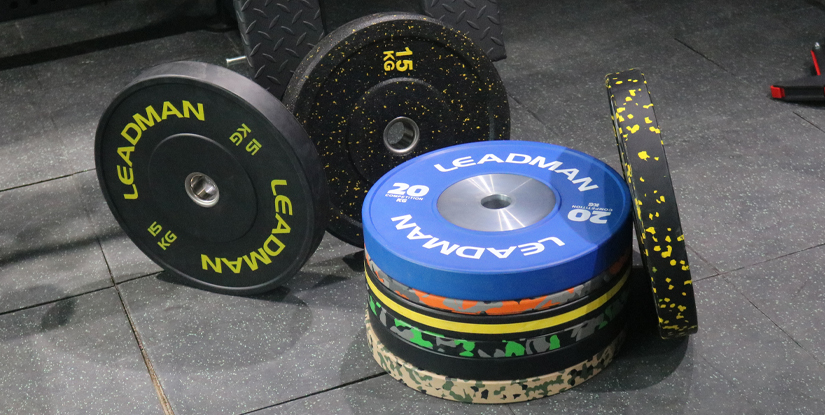Workout Floor Mats: Guide to Choosing and Caring for Gym Floors

Workout Floor Mats: Durable Support for Every Training Space
Choosing the right workout floor mat transforms a training area into a safe, comfortable, and durable environment. Whether you run high-intensity interval training, perform weightlifting, or set up a home yoga studio, the floor surface directly affects performance, equipment lifespan, and injury risk. This guide outlines materials, thickness, layout strategies, maintenance practices, and purchase considerations to help fitness professionals and home users make informed decisions.
Materials and Construction
Workout floor mats are manufactured from several core materials. Understanding differences helps match products to application needs:
- Ethylene Vinyl Acetate (EVA) foam — lightweight, shock-absorbing, and affordable; suitable for light cardio, stretching, and yoga.
- Rubber (virgin or recycled) — high density, excellent impact protection, and durable under heavy equipment; preferred for weight rooms and multipurpose studios.
- Polyurethane (PU) — offers resilience and comfort; commonly used in layered mats and premium options.
- Interlocking tiles — typically EVA or rubber; provide modular coverage and easy replacement for damaged areas.
Thickness and Performance
Thickness directly correlates with protection and stability. Typical guidelines:
- 3–6 mm: Ideal for yoga, Pilates, and general floor exercises where stability and grip matter.
- 8–12 mm: Balanced option for home gyms and moderate-impact cardio; offers improved cushioning.
- 15–25 mm: Recommended for free-weight areas and heavy equipment; reduces floor vibration and protects subfloor.
Consider density as well as thickness: a thinner, high-density rubber tile can outperform a thicker, low-density foam under heavy loads.
Layout and Installation
Effective floor planning improves training flow and equipment safety:
- Determine activity zones — designate separate areas for cardio, strength, and mobility.
- Use interlocking tiles in open spaces for easy reconfiguration and maintenance.
- Install extra-thick mats under squat racks and multi-station equipment to absorb dropped weights.
- Allow perimeter spacing for ventilation and to prevent moisture entrapment against walls.
Performance Considerations
When selecting mats, evaluate these performance factors:
- Shock absorption — protects joints and reduces impact noise.
- Slip resistance — ensures safety during dynamic movements and sweaty sessions.
- Durability — resistance to tearing, compression set, and chemical damage from cleaning agents.
- Hygiene — non-porous surfaces or sealed finishes reduce odor and microbial growth.
Maintenance and Care
Routine maintenance extends mat life and preserves safety:
- Daily — sweep or vacuum to remove grit and debris that abrade surfaces.
- Weekly — mop with pH-neutral cleaner; avoid harsh solvents that degrade rubber or foam.
- Monthly — inspect seams, interlocks, and high-wear zones; replace tiles that compress or crack.
- Odor control — ensure proper ventilation and use enzymatic cleaners when necessary.
Safety and Standards
Check for product certifications and manufacturing standards: fire resistance ratings, low-VOC emissions, and compliance with local building codes. For commercial installations, prioritize materials that meet industry safety standards for impact attenuation and slip resistance.
Buying Guide and Cost Considerations
Budget, longevity, and intended use determine value. Key purchasing tips:
- Buy by coverage area — calculate required square footage, include a waste margin for cuts and irregular layouts.
- Prefer virgin rubber for heavy-commercial use; recycled rubber offers cost-effective solutions for moderate applications.
- Consider warranty and lifecycle cost — cheaper upfront mats may require earlier replacement.
- Request samples when possible to test texture, grip, and odor before full purchase.
Environmental and Sustainability Factors
Many manufacturers now offer recycled-content mats and take-back programs. Evaluate lifecycle impact: recycled-rubber products reduce landfill use but verify the source and any potential off-gassing. Certifications such as GREENGUARD can indicate lower chemical emissions.
FAQs
- Q: What thickness is best for heavy weightlifting? A: 15–25 mm high-density rubber provides optimal protection.
- Q: Are interlocking tiles stable enough for Olympic lifts? A: Use high-density rubber tiles with tight interlocks to minimize movement.
- Q: How do I clean rubber gym mats? A: Sweep, then mop with a pH-neutral cleaner; avoid bleach and solvents.
- Q: Can I use EVA foam under heavy equipment? A: EVA foam compresses under heavy loads—choose rubber where weight is concentrated.
- Q: Do mats prevent equipment damage to concrete? A: Yes, thick rubber mats reduce surface abrasion and impact marks on concrete.
- Q: What causes mat odor and how to remove it? A: Off-gassing and trapped moisture cause odor; ventilate and use enzymatic cleaners.
- Q: Are recycled rubber mats safe for home use? A: High-quality recycled rubber mats are safe; verify low-VOC certification if sensitive to odors.
- Q: How often should gym mats be replaced? A: Replace when compression sets, cracks, or slip resistance degrades, typically 3–10 years based on use.
- Q: Can I install mats over radiant heating? A: Check manufacturer specifications; thin, low-R-value mats are generally suitable, but confirm heat transfer safety.

